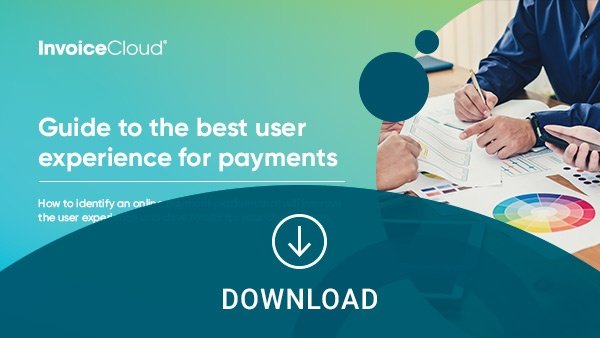Keeping up with customer expectations is a challenge for most organizations, particularly when it comes to creating a good user experience. Customers expect a simple and consistent experience throughout their entire interaction with your organization–from visiting your website, to engaging with customer support, to making an online payment. And as user experience increasingly becomes a primary differentiator for many organizations, it’s more critical than ever to get every interaction right.
When it comes to making an online payment, your customers expect to be able to make payments any time, anywhere. But delivering on that experience is about more than setting up payment channels. It also requires your organization to create a payment experience that is just as convenient on a mobile device as it is through an online portal.
Before outlining how to create a good online payment experience, however, let’s first discuss the key benefits of doing so.
Benefits of a good online payment experience
Beyond improving customer satisfaction, creating a positive user experience is also about driving quantifiable results for your organization. Solutions that are designed to improve the user experience and drive customer engagement are more likely to drive electronic payment (e-payment) and self-service adoption. This creates a number of benefits, including:
- Decreased customer service calls: When customers struggle with your online payment platform, they will call your customer service agents for help registering their account or making payments. A good online payment experience solves this problem by making it simple and easy for customers to complete these tasks through self-service. This means less time your staff needs to spend fielding customer issues, increasing the time they can spend on other high priority projects.
- Fewer walk-in and mail-in payments: An easy-to-use online payment system drives more online payments, which means decreased lobby traffic and fewer mailed-in payments. This decreases the time your staff spends collecting and manually processing payments.
- Lower print and mail costs: For organizations that print and mail a large number of bills, the costs can be significant. A well-designed online payment solution will convert customers to pay online and enroll in services like paperless billing, which ultimately reduces the amount your organization has to spend on printing and mailing paper bills.
- Accelerated collections: A good online payment experience will prompt users to enroll in services like AutoPay, or enable them to set reminders so they don’t forget to pay their bills on time. This ultimately accelerates collections and reduces issues like late payments or cancellations for non-payment.
- Decreased staff workloads: At the end of the day, online payment platforms should make work easier for your staff, not harder. Payment platforms with well-designed user interfaces alleviate common challenges when it comes to issuing bills and collecting payments, decreasing staff workloads and improving staff morale.
How to design a good user experience
There are a number of elements that go into creating a good online payment user experience, and it starts with the user interface (where your customers go to access and pay their bills online).
A good user interface should be:
Easy to use: A clunky or awkward user interface will deter customers from paying bills online. An easy to use payment portal enables customers to easily make payments without having to jump through multiple screens or re-enter information that your organization already has (such as their name and address) to pay a bill. Calls to action, like where to click to pay a bill, should also be clear and well-placed.
Branded for the biller: Making an online payment involves inputting sensitive payment information in an online portal. When a payment platform is not branded for the billing organization, it’s difficult for a payer to trust that they’ve landed in the right place. This will ultimately decrease e-payment and self-service adoption rates. Branding a payment solution for the biller means everything from the initial e-bill, to the payment portal, to the confirmation pages and all emails should look and feel consistent.
Designed for engagement: Payers will not go searching for options to enroll in services like paperless billing or AutoPay. To increase self-service rates, an online payment platform should prompt payers (both registered and unregistered) to enroll in these services throughout the payment process.
Optimized for omni-channel: When it comes to making payments online, customers want to pay their bills whenever and wherever they want, and on the device of their choice. The more channels your organization offers, the higher the e-payment adoption will be–as someone who isn’t willing to make an online payment may be willing to make a phone payment via an IVR. But it’s not enough to offer these channels. Every channel needs to be optimized to provide a consistent and simple user experience. The pay by text or mobile payment experience should be as easy and simple as paying through the web portal on a computer. Otherwise, customers will abandon payments when the process to pay is too complex.
Always up to date: Technology is changing almost as rapidly as customer preferences, and to be effective your online payment platform needs to always have the latest features and functionalities. This means a Software as a Service (SaaS) delivery model that updates automatically, without any heavy lifting from your internal IT resources.
Improving the online payment experience is one of the best ways to increase customer satisfaction and drive positive results for your organization. To learn more about how to select an online payment solution that will provide the best user experience, download our ebook below:

